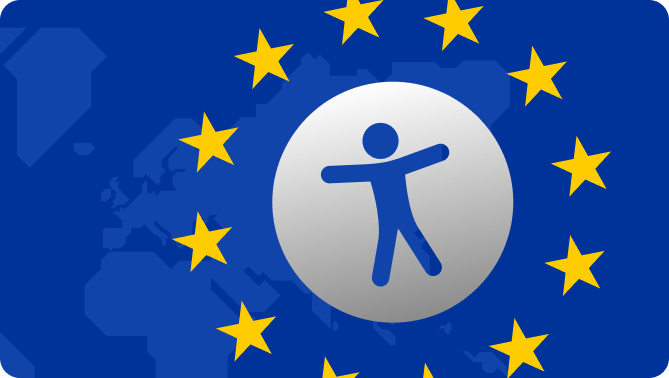What is the European Accessibility Act?
The European Accessibility Act (EAA) (Directive 2019/882) is a law that aims to improve the accessibility of products and services for people with disabilities in the European Union (EU). The act sets out clear requirements to ensure that essential products and services are accessible to all individuals, aiming to remove barriers that prevent full participation in society.
Why was the EAA created?
The EAA was created to address the significant gap in accessibility across industries, especially as digital technology and online services continue to grow. With over 87 million people in the EU living with some form of disability, the EAA’s primary mission is to ensure that everyone—regardless of physical, sensory, or cognitive abilities—can access products, services, and digital content.
The legislation builds on the European Union’s commitment to inclusivity and equal rights for all citizens, aligning with broader international movements like the United Nations Convention on the Rights of Persons with Disabilities (CRPD). Essentially, the EAA is a step towards creating a more inclusive society where accessibility is no longer an afterthought but a priority for businesses and service providers.
What does the EAA seek to achieve?
The EAA seeks to harmonize accessibility requirements across the EU, making it easier for businesses to comply with a single set of regulations while enhancing the user experience for people with disabilities. By creating uniform standards, the act aims to:
- Ensure products and services across key industries are accessible to everyone.
- Remove barriers to accessing digital content, including websites, mobile apps, and other online platforms.
- Promote economic growth by opening up markets to people with disabilities.
- Reduce the complexity and costs for businesses that operate in multiple EU countries by offering a clear, unified framework.
This law doesn’t just help individuals with disabilities; it makes products and services better for everyone. Accessibility often improves usability for all users—think voice commands, high-contrast visuals, or easy-to-navigate websites. In short, the EAA pushes for a future where businesses can’t just “opt out” of accessibility—it’s now a fundamental expectation.
Next steps
Getting started with web accessibility can seem overwhelming, but Silktide has the tools and experience to help you understand and comply with European accessibility legislation.
We combine powerful automated web accessibility testing with in-depth expert manual auditing by trained accessibility professionals.
Learn more about Silktide’s range of accessibility services.
